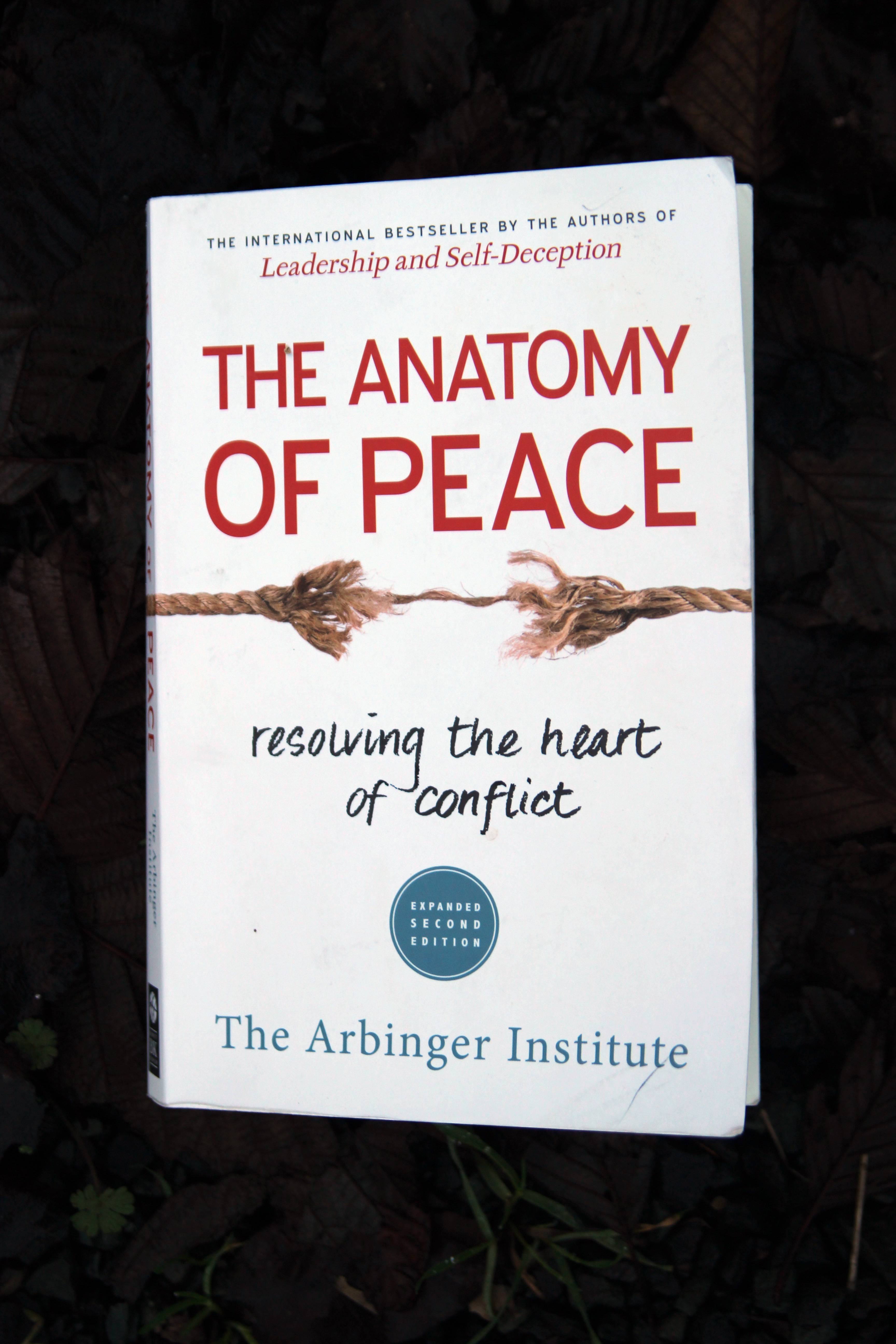Conflict is everywhere. We find it at work, at home, with family members, and with friends. The cause of such conflicts may not be what they seem, and the solutions may begin deeper than we know. The Anatomy of Peace: Resolving the Heart of Conflict by the Arbinger Institute is an insight as to how conflict can begin with how we view others, and as to whether or not our hearts are at peace to begin with. I read this book with a class that I teach called Adulting 101. A class for teenagers that teaches them basic skills that will help them to succeed in life. Here is a brief review of The Anatomy of Peace from my own perspective, and insight.

It is found early on in this book that when dealing with the conflict of others, it is imperative to work harder on helping things go right, rather than dealing with things that are going wrong. I like to look at this as playing really great offense so that your team has to play less defense. This metaphorical team can represent those you work with, and those that you live with as well. The book teaches this, and other lessons, by going through a story of a camp for troubled teens, or young adults. The story is of the parents who drop their teens off at said camp, and what they learn along the way. They believe that they are just dropping off their troubled children, so that they can learn to do right, but find out that they have changing themselves. In this story we meet Lou, a ex-military, powerful, and successful man who happens to have a child with a drug problem. We follow him as he learns to see the world differently, and more through the eyes of others around him.
The anatomy of peace begins, and ends with one very important concept, and that is whether or not your own heart is at war, or at peace. We learn while following along the journey of these distraught parents is that if your heart is at peace, you see people as people, but when your heart is at war, you see people as objects. In fact, “when our hearts are at war, we can’t see clearly. We give ourselves the best opportunity to make clear-minded decisions only to the extent that our hearts are at peace” (Arbinger Institute, 2015). The book takes us through this understanding by seeing how it is that we put ourselves, and others in to boxes of misunderstanding, and self-justification. The only negative opinion that I have of the book is that there isn’t enough how to at the end for dealing with others who may not want to heal their conflict with you. As I read this book, I found many great pieces of wisdom to remember when dealing with others, so I will end with some of my favorite quotes:
“No conflict can be solved so long as all parties are convinced that they are right. Solution is possible only when at least one party begins to consider how he might be wrong.”
“Sometimes we might be forced to defend ourselves… But that is a different thing than saying, that we are forced to despise, to rage, to denigrate, to belittle.”
“A choice to betray myself, is a choice to go to war.”
“My own contempt for others is the most deliberating pain of all, for when I am in the middle of it – when I’m seeing resentfully and disdainfully – I condemn myself to living in a disdained, resented world.”
and
“We are all surrounded by other autonomous people who don’t always behave as we’d like.”
The Anatomy of Peace: Resolving the Heart of Conflict. The Arbinger Institute, 2015. Berrett-Koehler Publishers, Inc.